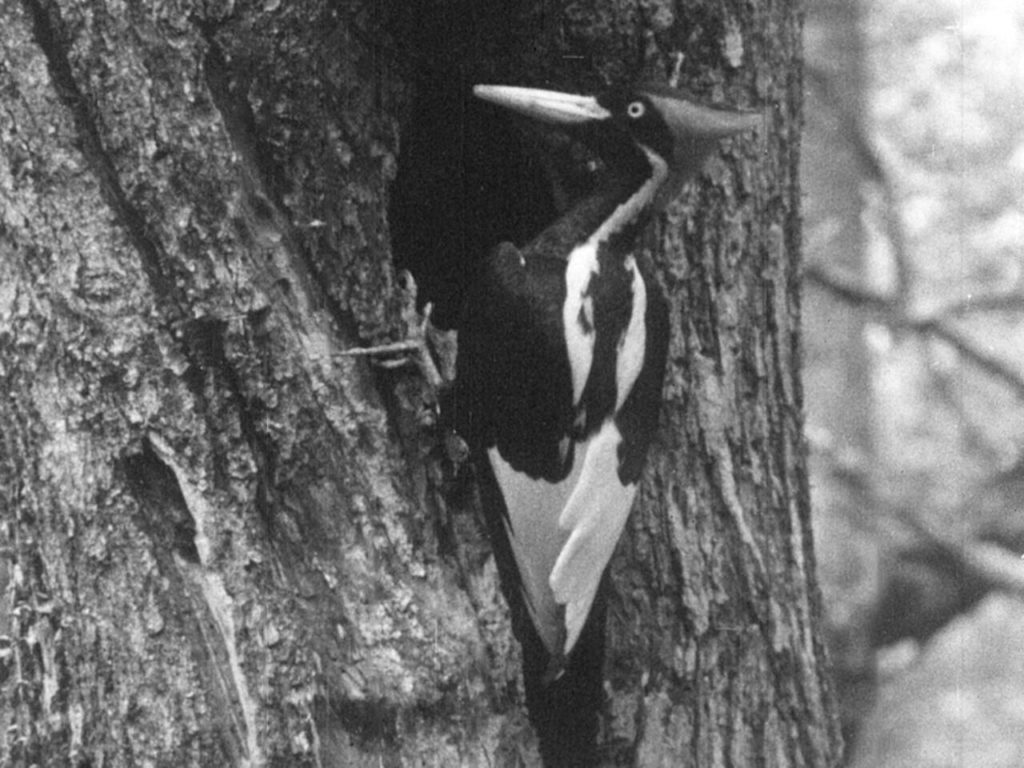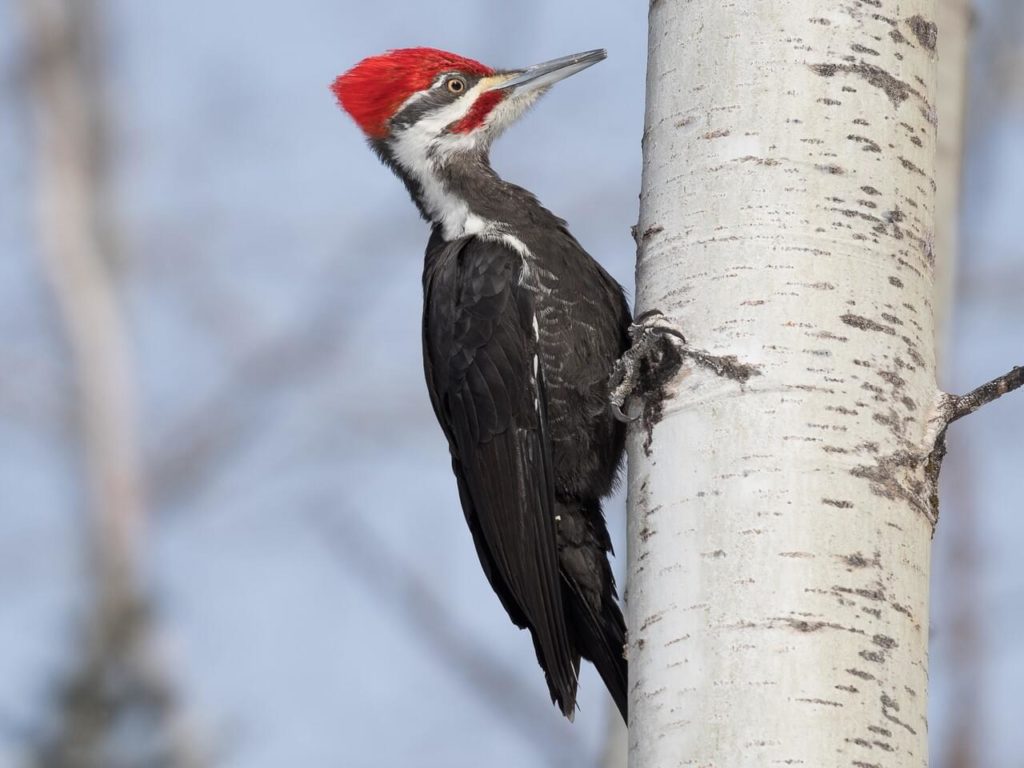
The Ivory-Billed Woodpecker lives! Or does it? This is the third piece on the extinct bird as reports of recent, unverified, sightings still come in. I guess the way to see a hidden bird is to make it extinct and suddenly sighting occur.
A few years ago, Ron Usner was sitting at his computer when he heard a noise outside his window. Thump-thump. He looked up to see the biggest woodpecker he had ever seen chipping away at a pine tree, sloughing off bark in large chunks. Fascinated, Usner snapped a picture, which he largely forgot about until recently when he saw a picture of the ivory-billed woodpecker in the newspaper, along with a story that wildlife experts had declared it extinct. “I said, ‘Doggone it, that sure looks like that critter I photographed years ago,” he said. He dug up his old photo and laid it next to the newspaper, comparing the two birds. Similar markings, similarly colored beaks, similar stature. “I don’t know if I saw the last of them, I’m not sure how long they live, but there could be others,” said Usner, who lives in Slidell’s Crossgates neighborhood, near the Honey Island Swamp. “If that was the last one then maybe they are now extinct.”
nola.com
Usner is not alone. Others have claimed to have sighted this woodpecker but none can verify the sighting.
Usner was among several people who, upon hearing that the ivory-billed woodpecker was one of 23 species declared extinct by the U.S. Fish and Wildlife Service, recalled seeing a similar bird and said: Not so fast. Maybe — just maybe — the ivory-billed hasn’t pecked its last tree. The last verified Louisiana spotting was more than 80 years ago on land in Madison Parish known as the Singer tract, because it was owned by the Singer sewing machine company and harvested for timber. Since then, numerous people have claimed to have spotted the bird. In St. Tammany Parish, for instance, a reported sighting in 1999 sent six bird experts from around the world into the marshy Pearl River Management Area near Slidell for a two-week search that ended, ultimately, with not sight of the elusive bird. The quest has split the birder community, some of whom fervently believe the ivory-billed woodpecker is still lurking in the swamps and others who brush off reported sightings as the byproduct of overactive imaginations.
Even those who love the birds and are in national and state ornithological organizations still have hope.
John Dillon, president of the Louisiana Ornithological Society, an LSU-based group of bird lovers with varying levels of expertise, is one who remains unconvinced. Any evidence to prove the bird still exists must be “irrefutable,” he said — meaning blurry photos won’t cut it. “If there was any evidence — even slightly compelling — it would not have been declared extinct,” Dillon said. “It’s an amazing amount of findings for a bird no science has seen in 80 years. I appreciate the gusto but it should be applied to species we know are definitely still here.” The ivory-billed woodpecker, so-called for its pale bill, is described by the Cornell Lab of Ornithology’s Macaulay Library as a large woodpecker with a black body and white lines down its back. Males sport a red crest, while female heads are black. About the size of a crow, the elusive woodpeckers stand 18-20 inches tall and have a wingspan of around 30 inches. Large and majestic, they were once dubbed the “Lord God bird.” Blurry photos of a large woodpecker that fits those criteria would seem a sure-fire sign that the bird is alive and well — were it not for the existence of a lookalike relative, the pileated woodpecker. Pileated woodpeckers, squatter in stature, have a smaller, darker bill and lack distinctive white markings on their backs.

Two birds that look alike can cause mix-ups in identifications.
Andrew Moran, who lives in Covington on 20 acres off Three Rivers Road, said he routinely saw what he believed to be an ivory-billed woodpecker flying around earlier this year. He hasn’t seen it since Hurricane Ida. “Sitting at our breakfast table with big windows, we see birds flying all over,” he said. The property, protected by a conservation servitude, backs up to the Tulane Primate Center, leaving lots of untouched woods that could be perfect place for a large woodpecker to hide, he said. “I’m no bird expert,” he said. “Maybe we have it, maybe we don’t. But it looks like something we’ve seen before.” Roland Orgeron Sr. said he and his wife observed a pair of birds at their home in Luling that flitted between a utility pole and a tree in their yard for a few days in May 2020. One was about twice the size of the other, he said, and their beaks were pale. “I joked that they looked like they had rubbed the paint off its beak from pecking,” he said, noting that they left the utility pole covered in tiny holes. Though he doesn’t consider himself an expert birder, he surmised that just maybe the bird is evading ornithologists’ reach: “Maybe they’re not looking in the right spot.”
The supposed sightings continue to be heard but, again, not verified.
Michael Roberts first saw what he believed to be an ivory-billed woodpecker in the late 1990s when it was pecking on a pecan tree in his backyard in River Ridge. “I had no idea what the hell it was, it looked kind of like a mini-pterodactyl,” he said. Since then, he thinks he’s seen two others. One, while working for Entergy on a substation between Vacherie and Donaldsville, and another in Terrebonne Parish. He got a picture of one perched on a pole. “It might have been pileated, it might have been ivory-billed, who knows,” Roberts said. “They’re out there, you just have to find them.”
All the supposed sightings and all over the southern Louisiana area. Either there are still Ivory-billed woodpeckers around or the Plleated woodpecker is alive and well.



